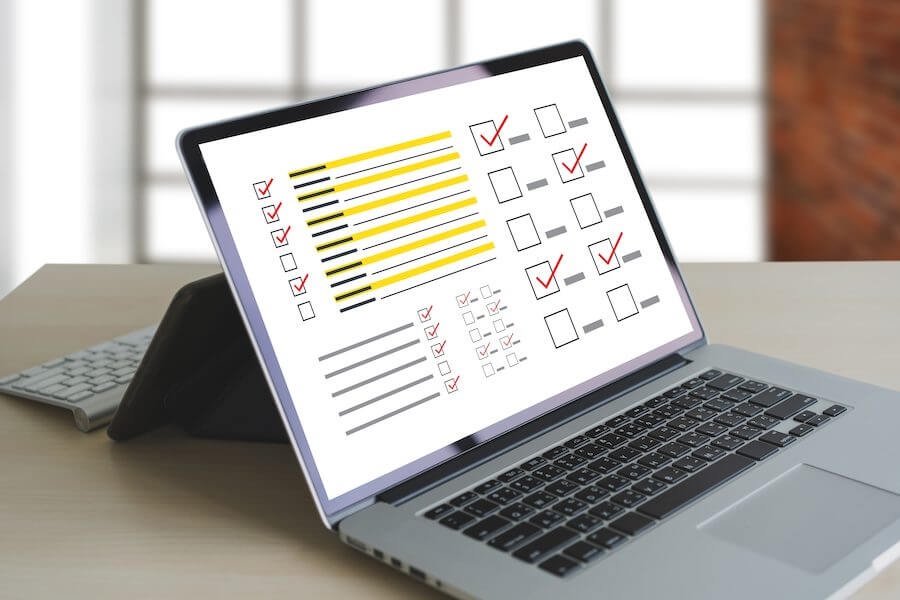Requirements analysis is a method that business entities use to develop specific needs and align them with stakeholders’ expectations when launching a new product.
It is characterised by constant engagement with the targeted clientele and all identified stakeholders to ensure every requirement is clearly defined and any potential conflicts are resolved.
This analysis defines project requirements and blends them with the stakeholders’ and clients’ prospects. A project manager must carry out requirements analysis before starting any new project. It’s carried out when project managers want to find out the total cost of the intended project.
This also helps streamline other project components, such as organising projects on a priority basis, listing project tasks, and identifying the specific tasks that require specialists and how to engage them. Requirements analysis example templates provided in this article will help project managers effectively handle project planning to ensure the project is finished within the decided schedule and meets all the stakeholder’s needs and expectations.
Download Templates
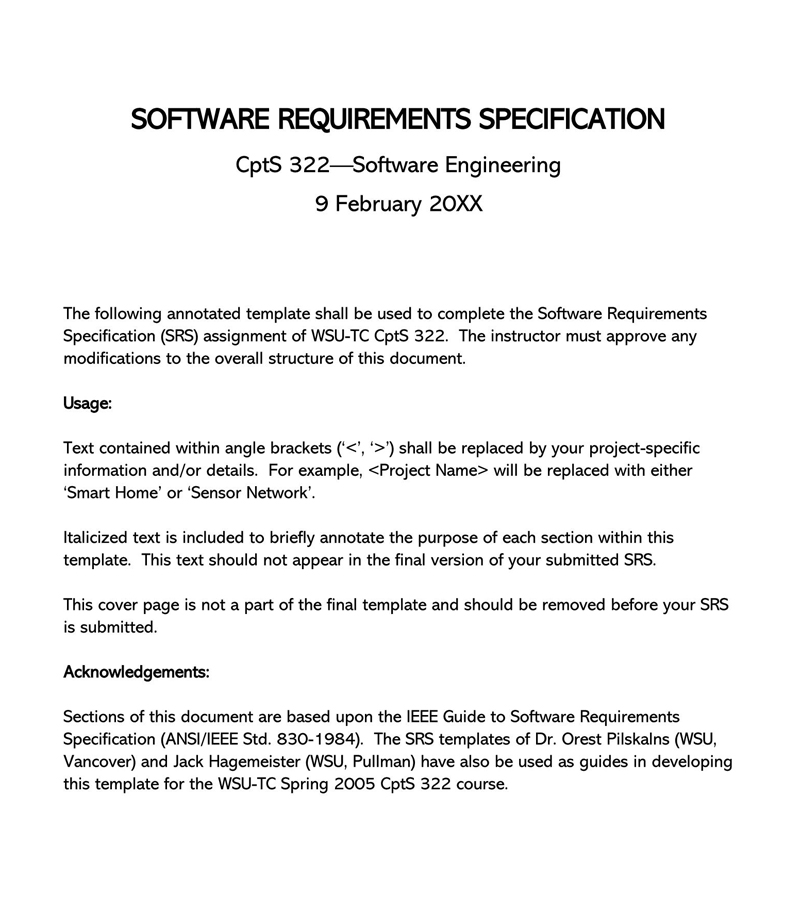
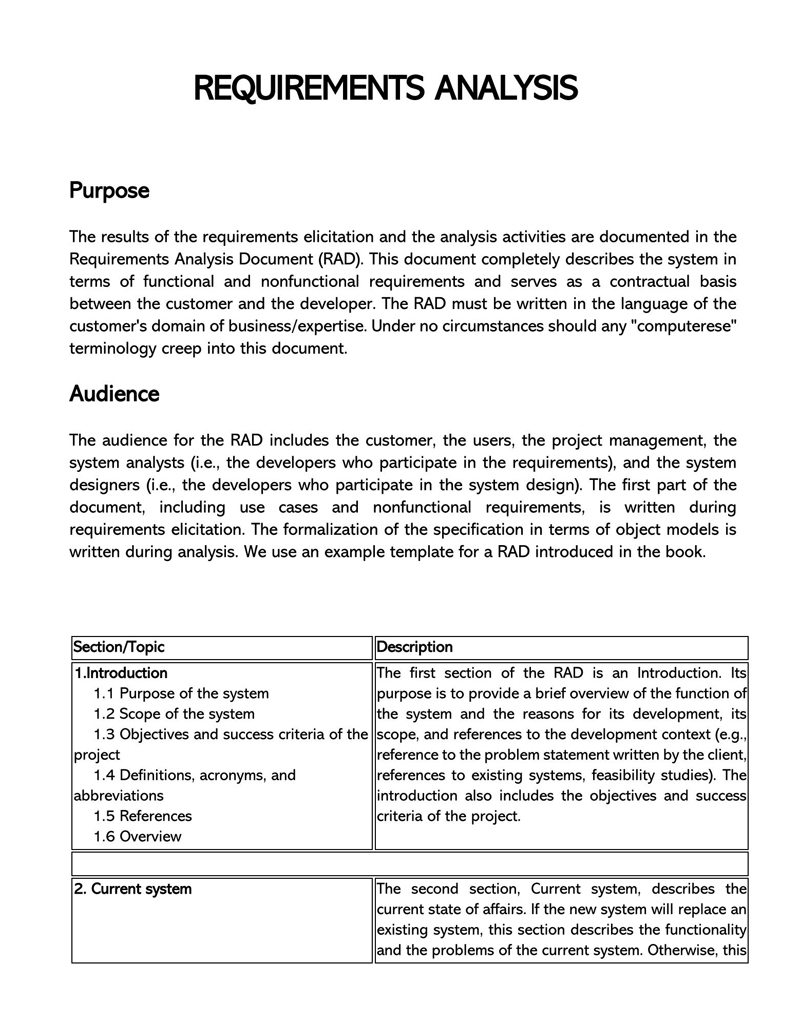
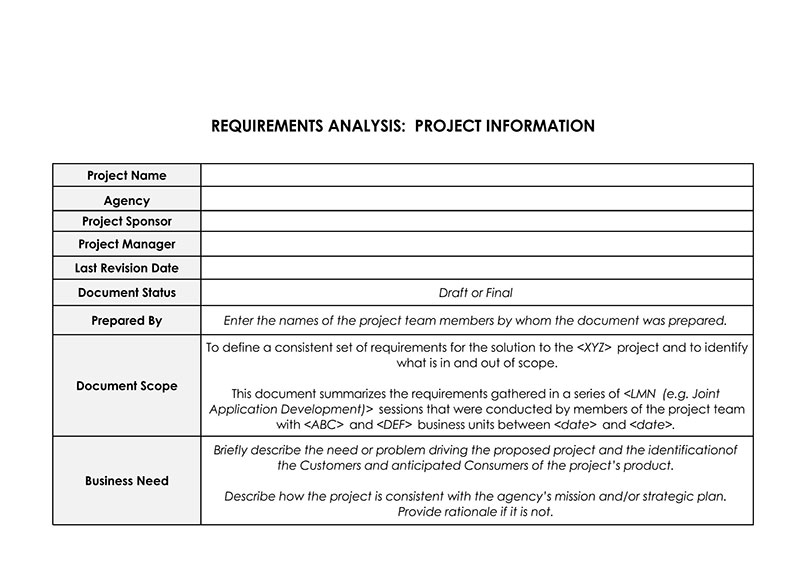
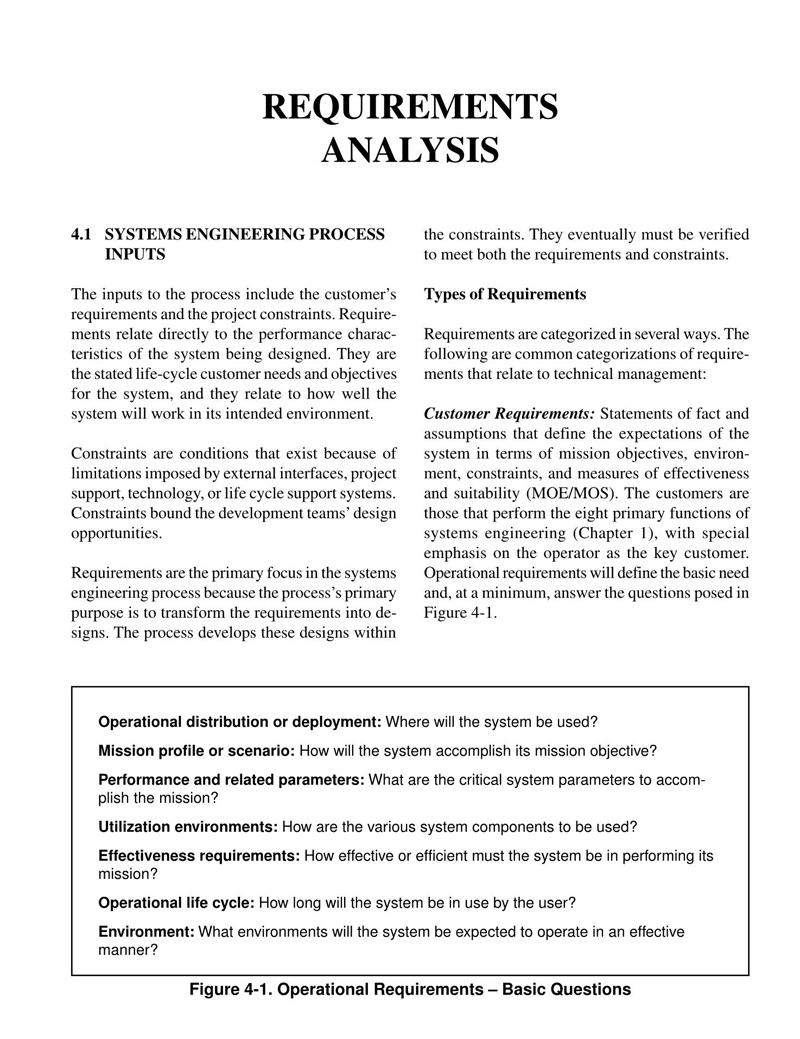
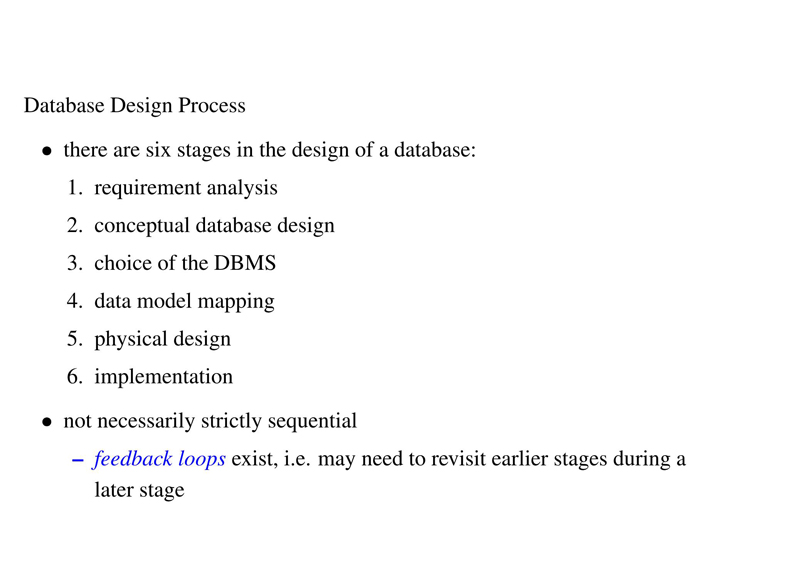
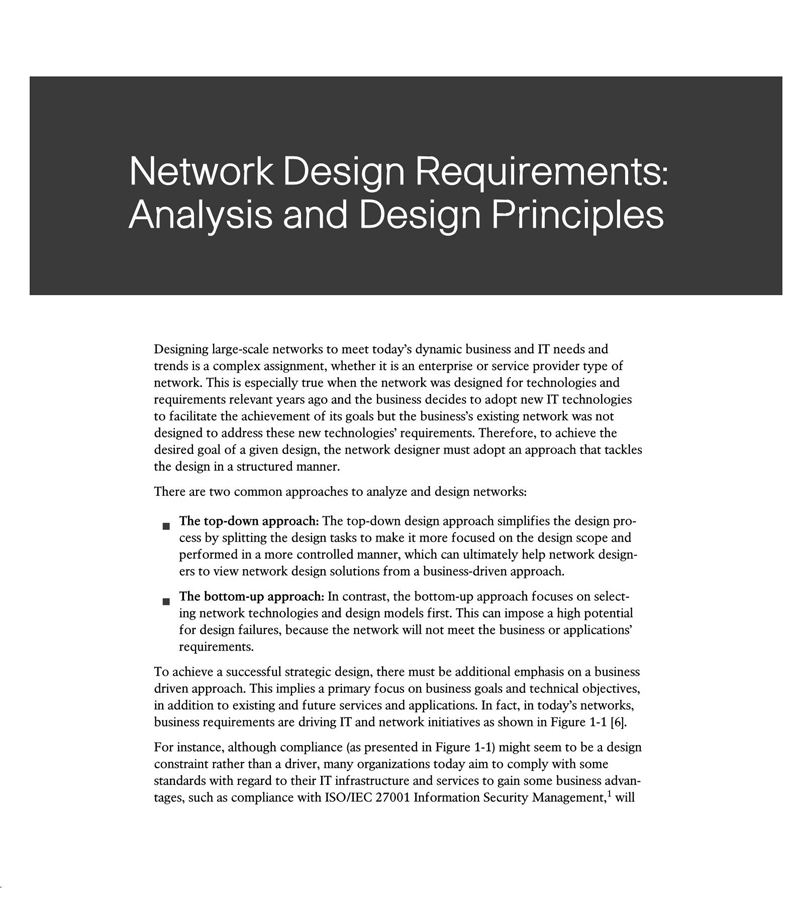
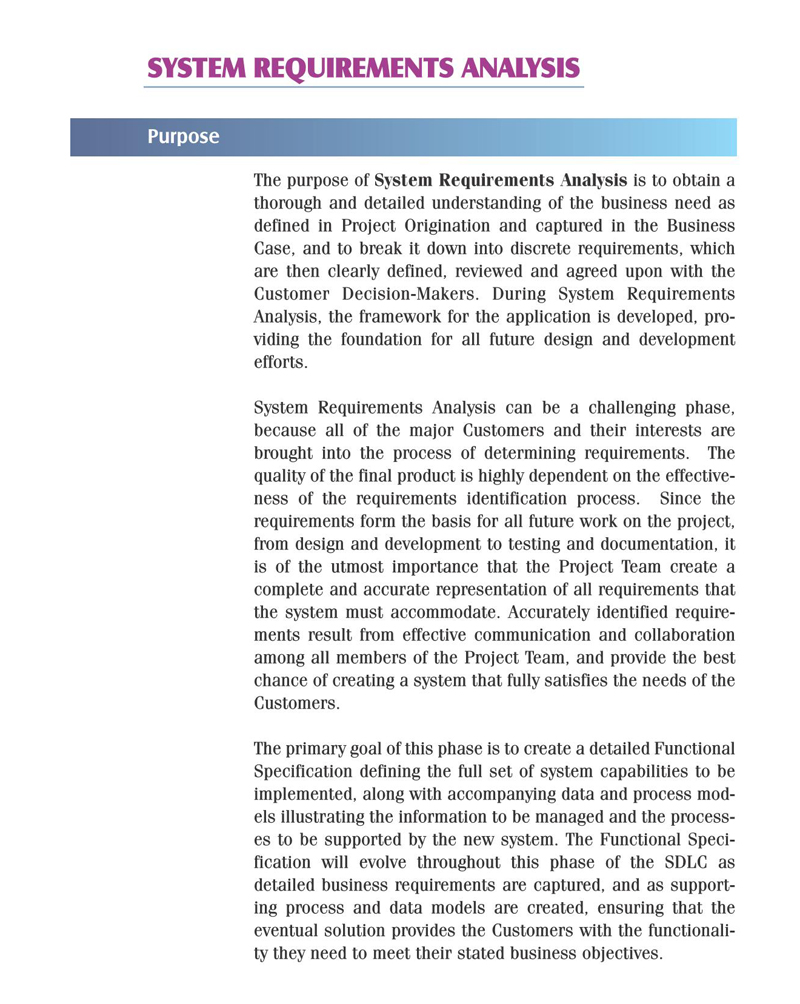
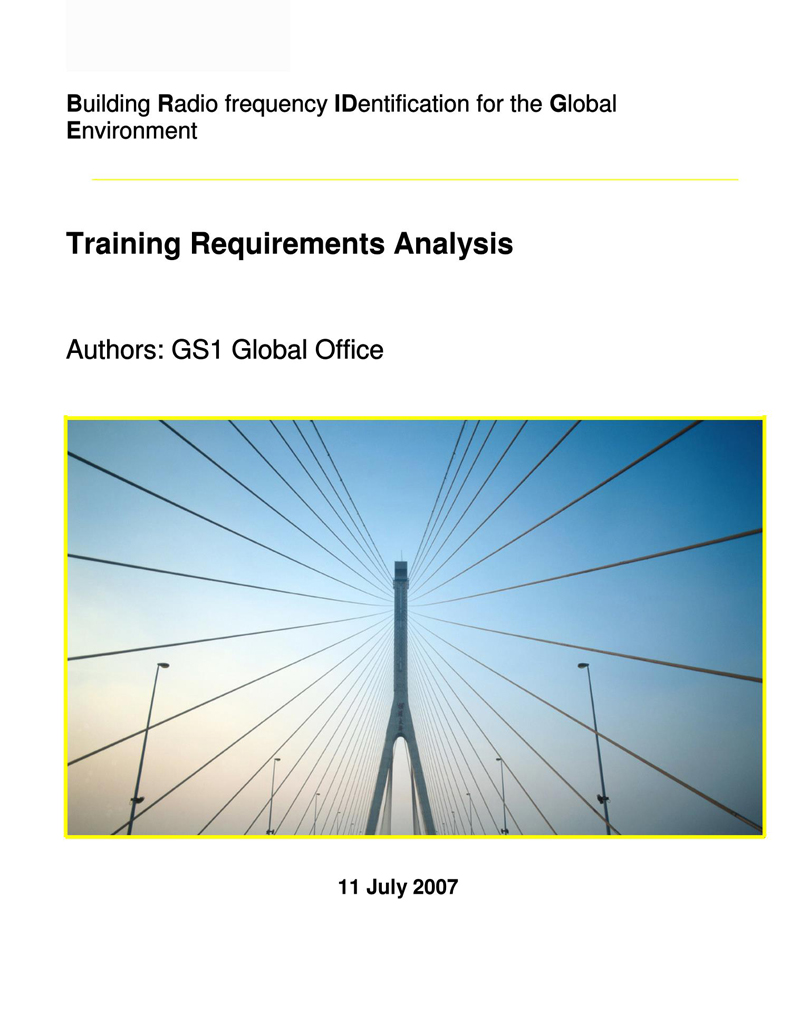
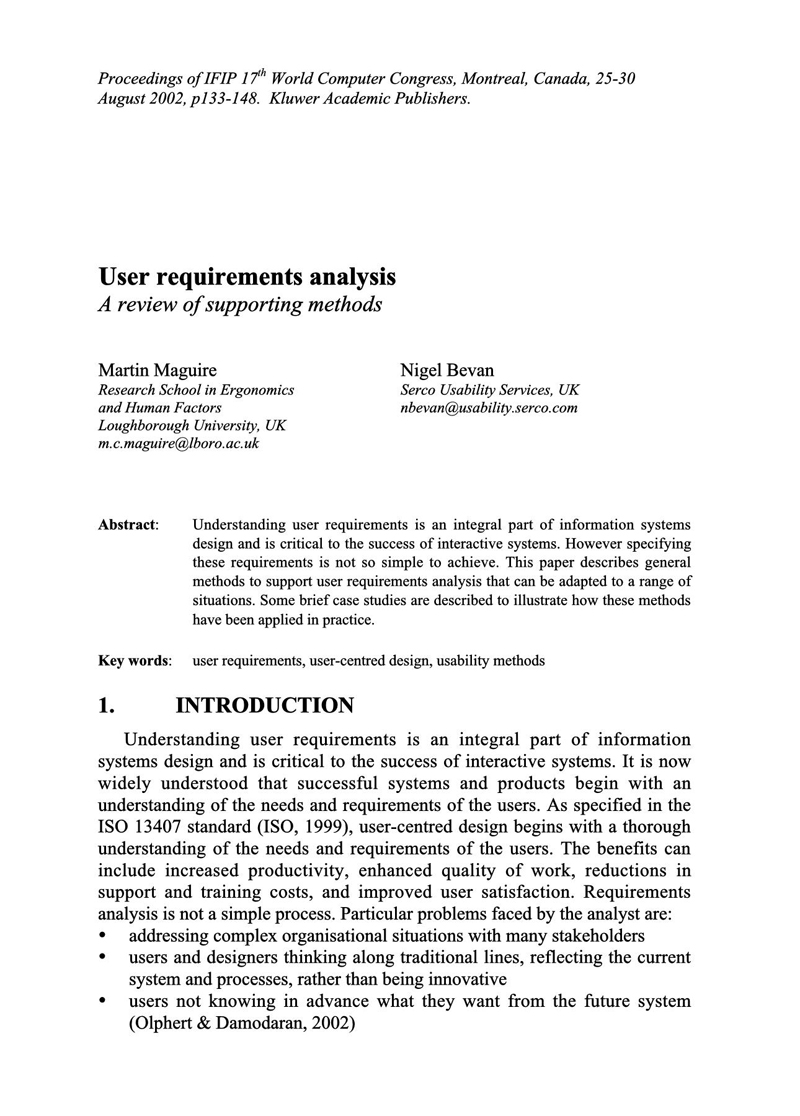
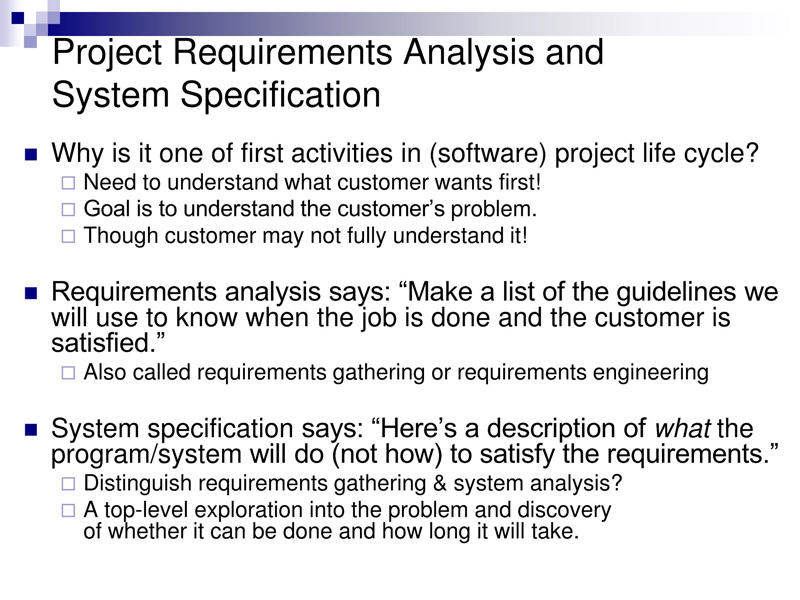
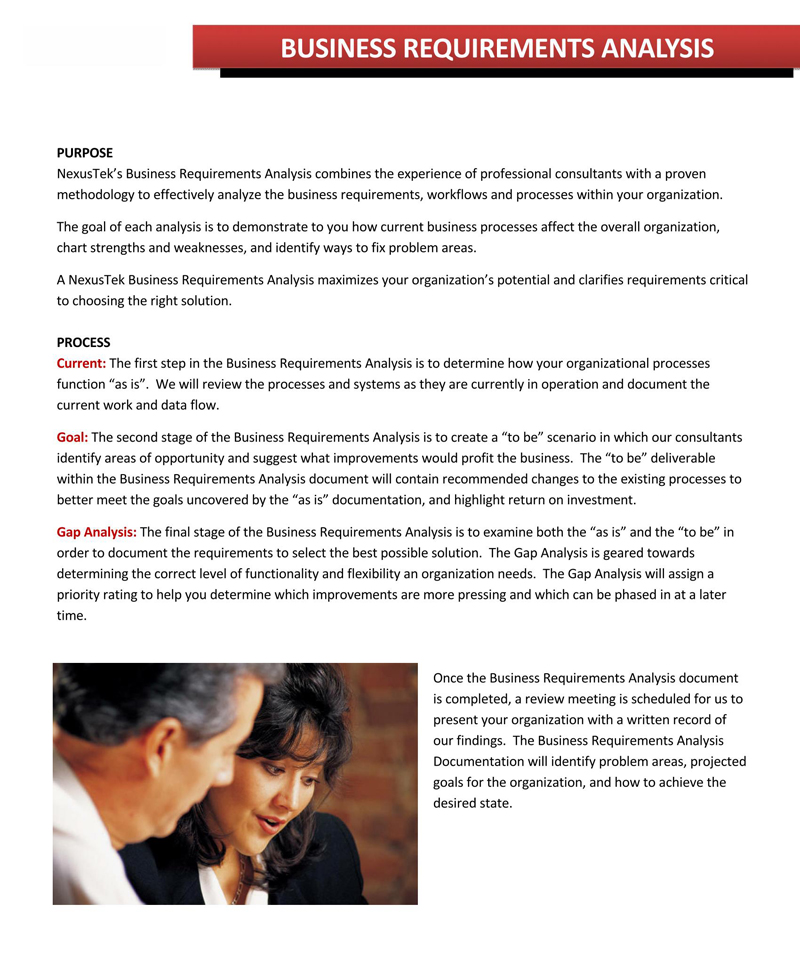
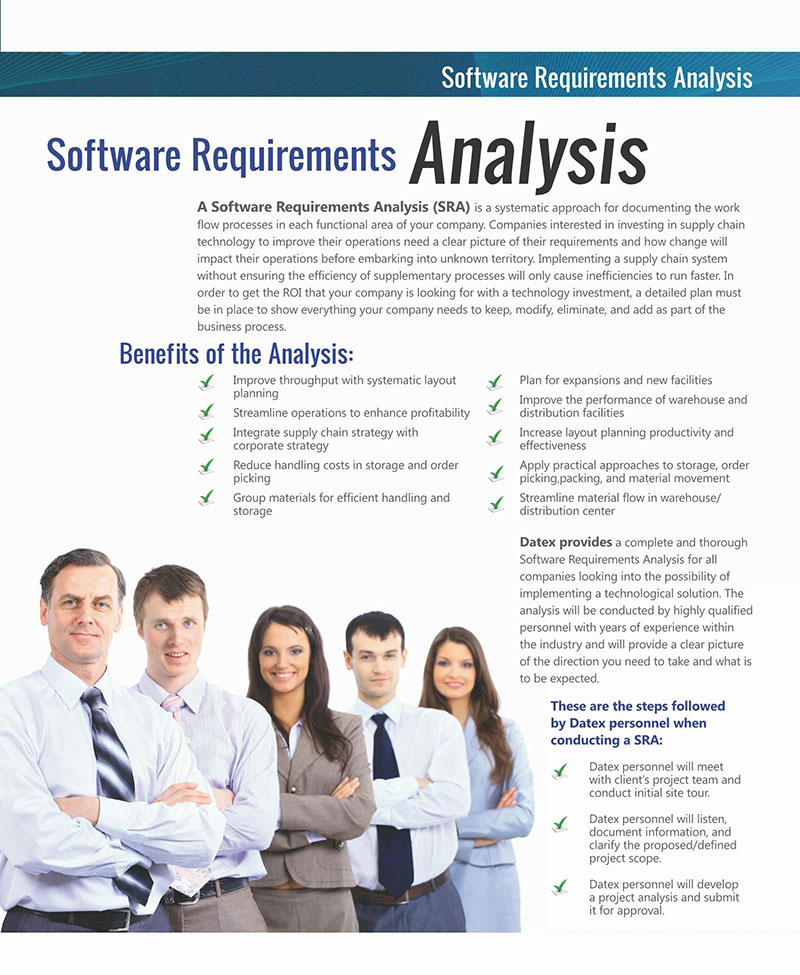
How Requirements Analysis Works
Project managers use such analysis as a roadmap for project planning to ensure new projects are completed as planned by taking into account all the desires and expectations of all stakeholders and end-users.
For a successful analysis process, every project manager must follow the following procedures:
Identify project sponsors and end-users
Begin by outlining the key stakeholders in your project. These are the main project’s sponsors. They will make the final decision on what should be included in your new project. Once you have a list of stakeholders, research and compile a list of all the prospective end-users of the new product, identify their needs and expectations and design a product that offers the much-needed solution. Remember to group the end-users for a product or service since they can either be in one department or from multiple departments and levels in an organisation.
Group key stakeholders
All the key stakeholders in your project are not the same. Some have high interest and power to influence your project’s direction, and some are less involved. Requirements analysis groups key stakeholders under different segments as per their influence and interest level in the project.
They can be:
High power, highly interested
These are stakeholders who will be directly impacted by the new project. They include the project sponsors and targeted customers. Therefore, you must clearly understand their expectations to increase your chances of the new project acceptance and to avoid conflicts.
High power, less interested
These stakeholders have the major share in your project, but they are not active. Ensure that you understand their expectations so that you can work towards meeting them.
Low power, highly interested
They are stakeholders with a small stake in your project, but they are very interested in the success of your new project. Therefore, always engage with them frequently to ensure they are updated.
Low power, less interested
They are the stakeholders who have a minor share and interest in your project. Therefore, you need to know what their needs are and align them with your product goals without engaging them too much.
Capture stakeholder requirements
You must engage every stakeholder and the intended end-user and give each of them an opportunity to share their opinions and expectations with regard to the new product or service.
When engaging the stakeholders, you should approach them with utmost transparency and a clear breakdown of the project as well as any foreseen gaps. This will help stakeholders understand the project better and therefore set only realistic expectations, which helps eliminate any conflicts in the future. When there is clear communication, you are able to understand each stakeholder’s perspective and deliver a project that fulfils their collective interests.
Where to Start
If you are wondering where to start, the following are some of the best requirements analysis techniques that you can employ to evaluate their requirements:
Hold one-on-one interviews
This technique involves interviewing each of the key stakeholders and targeted customers independently so that you can gather discrete requirements from a personal perspective. All stakeholders’ interviews should have a project scope that will be used to guide interview deliberations. If there is not a clearly defined project scope, other stakeholders might come up with new ideas and suggestions that were not part of the initial project plan.
Conduct group interviews
Carry out group meetings by bringing together different segments of stakeholders and end-users so that you can understand the requirements that will serve the common good. Always keep asking the question “Why”. Doing so will help you eliminate needless requirements and only focus on the things that matter.
Use focus groups
Focused groups will help you understand how the product information flows among different stakeholders and end-users; thus, helping you eliminate any conflicts that may erupt in the future stages.
Utilise use cases
Use cases are another important requirements analysis tool. They give the stakeholders a preview of how the final product will look once completed. Doing so helps the stakeholders visualise how the proposed new product is going to offer solutions. As the end-user of the product or service, this scenario-based method is used to take you through the whole process in a step-by-step manner. It’s one of the best techniques when gathering functional requirements. You can start by using sample use cases to serve as a roadmap for developing your own.
Build mock-ups
Building a mock-up of your new product will help intended users to have a glimpse of what the final product will look like. When you gather all the requirements, you will have an easier time creating a prototype of the intended final product or service. In addition, doing so helps you get constructive feedback from the intended users; thus, making it easier to address any future implementation challenges and viability issues.
Group all Requirements
You will likely receive different requirements from different stakeholders and end-users, when conducting the requirements analysis. It’s highly advisable to group them in the following categories to streamline the working process:
- Functional requirements- You will group the requirements that relate to the function that the new product will carry out.
- Technical requirements- Outline a list of the key technical requirements that need to be addressed so that the product can be created successfully, as envisioned.
- Transitional requirements– Define the specific procedures that need to be followed in every step so that the new product can be realised without any hiccups.
- Operational requirements- List the main back-end operations that need to be executed properly to ensure the product works efficiently.
Face the Challenges of Identifying Project Requirements
When you initiate the process of project requirements analysis, you will encounter a number of challenges. When you identify key stakeholders and the intended product users, they might have challenges communicating their specific requirements if you fail to ask them the right questions.
Project requirements are dynamic and are likely to change even after being outlined during the initial stages of the project. For this reason, you must prepare in advance with a backup plan that can handle any unforeseen circumstance.
If you are managing different teams, offer yourself as a mediator to improve communication and collaboration. Finally, rise above the usual organisational politics that are common when working with a cross-functional team and spearhead your team to remain focused so that you can achieve the set project goals and objectives.
Analyse, validate and record requirements
After categorising requirements, the next step should be to analyse them to gauge their feasibility and how they can be delivered in the course of your project.
It involves the following steps:
Clearly define all requirements
The requirements should be clearly outlined. They should be clearly defined and not ambiguous. They should be well detailed to ensure everything is clearly understood and can create a working system. Lastly, all the requirements must align with the business needs.
Prioritise requirements
Group the requirements based on their urgency and priority levels to know which ones should be allocated resources first and which can be implemented later.
Conduct impact analysis
An impact analysis simulation will help you comprehend how the proposed requirements will impact the project delivery.
Settle conflicting requirements
If there are any conflicting requirements, take a step and engage all the key stakeholders and discuss the issues at hand. Then, you can come up with new alternatives to conflicting requirements so that you can arrive at neutral project expectations.
Investigate feasibility
Carry out an in-depth product analysis using the defined requirements to determine whether it’s dependable. Also, identify any challenges you are likely to encounter and share the information with key stakeholders and targeted product/service end-users.
Sign off
After conducting the requirements analysis, prepare a well written report document of the business needs and distribute it to all stakeholders and end-user so that they can air their final views and feedback. After all the concerned parties have given their views, and a final list of requirements is arrived at, have all the key stakeholders sign an agreement contract. This adds weight to the verbal agreements.
The signed document is known as the Software Requirements Specifications (SRS) and serves as a binding principle and ensure that you implement the project as agreed upon without tolerating any interruptions or changes while the project is ongoing.
Requirements Analysis Techniques
There are several techniques that project managers use to manage and effectively deliver new projects. The different methods can either be used for business or software requirement needs.
Techniques for business needs
Different businesses require different requirements analysis techniques to help outline the business workflow. The following as some of the most common business techniques that can be used for business development:
Business process model and notation (BPMN)
The Business Process Model and Notation (BPMN) technique uses graphs to illustrate and explain various business processes. Business analysts use it to break down messages of different parties working in related business activities in an orderly sequence manner.
Business motivation model (BMM)
Business Motivation Model (BMM) is a technique that is used to create a solid structure that aids in developing, managing, and communicating business plans that align with business strategy in a well-structured manner. It provides a clear description of all business plan elements and how they are all interconnected.
Gantt charts
A Gantt chart is a project management tool that is used to provide a visual illustration of various project tasks and their estimated timelines. Business analysts use this data to mark key milestones by clearly understanding all tasks’ start and end dates in a given project.
Flow charts
A flowchart represents a logical sequence of a related set of activities. Both geometric symbols and arrows are used to showcase how various tasks and processes are interrelated.
Customer journey mapping
Customer journey mapping, also referred to as journey mapping, is the process of coming up with a visual story about your customers in relation to how they interact with your brand or products. Businesses can see how their brands and products look by perceiving from the customer’s angle.
Gap analysis
The gap analysis technique assesses any gaps in a product’s performance to determine whether the current performance is equal to the initially desired performance. The current performance can be measured in terms of cash, labour, and time and the results are compared to the initial targets.
Requirements analysis techniques for software needs
For software needs, businesses use the following analysis techniques:
Data flow program
A data flow diagram is used to map out how information flows in a system. It’s used to visualise, analyse, and improve business software system processes. The information is compressed using standardised arrows, text labels, and circles to make it easy to understand even non-technical team members.
Use cases
Use cases in software engineering refer to scenarios where a specific software system could be used potentially. It’s where the system is active, ready to receive an external request and immediately respond to it.
User stories
User stories are informal, natural language descriptions that define software system features. They are mostly written from an end-user perspective, and they can be recorded digitally using project management software. User stories are used to bring out clarity among related teams to define what is going to be built, why it’s being built, when and who the targeted end-user is. User stories also help homogenise the functionality of the product.
Key Takeaways
For any new project to be delivered successfully, project managers must carry out in-depth requirements analysis in every project cycle. When there is constant engagement with key stakeholders and end-users, you will ensure there are no conflicts by meeting all the expectations and requirements.
There are various techniques and tools that you can use to gather requirements analysis, as explained above. But you must ensure that the requirements are clear, straightforward, and relevant to your business goals. Once you have compiled the final results, prepare them in a formal document and have the key stakeholders sign to make it a contract.
Take help from the example templates given in this article when creating your own requirements analysis document. This Analysis will give you the confidence to kick-start the new project and to not only deliver it on time but within the set budget and meet all the key stakeholders’ and end-users’ expectations.







